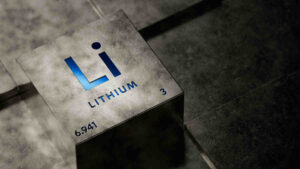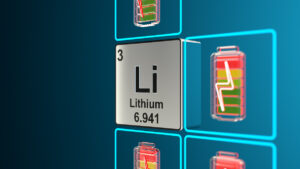US researchers might have just discovered how to bring ‘dead’ lithium batteries back to life

Pic: Getty
Researchers have potentially found a way to revitalise old rechargeable lithium batteries, which could lengthen the battery life by ~30%.
It could be a boon for battery makers who are always looking for ways to make rechargeable batteries with lighter weight, longer lifetimes, improved safety and faster charging speeds.
As lithium batteries cycle, they accumulate little islands of inactive lithium that are cut off from the electrodes, decreasing the battery’s capacity to store charge.
The research team at the US Department of Energy’s SLAC National Accelerator Laboratory and Stanford University discovered that they could make this ‘dead’ lithium creep like a worm toward one of the electrodes until it reconnects, partially reversing the unwanted process.
The researchers said that adding this extra step slowed the degradation of their test battery and increased its lifetime by nearly 30%.
“I always thought of isolated lithium as bad, since it causes batteries to decay and even catch on fire,” SLAC professor and investigator with the Stanford Institute for Materials and Energy Research (SIMES) who led the research Yi Cui said.
“But we have discovered how to electrically reconnect this ‘dead’ lithium with the negative electrode to reactivate it.”
Extending the limits of life: A method to revitalize “dying” #lithium-ion batteries discovered by researchers @SLAClab and @Stanford. The discovery could extend the range of #electricvehicles.https://t.co/jxvCl4LKai
— Stanford ENERGY (@StanfordEnergy) January 4, 2022
Re-establishing the connection between lithium islands
The idea for the study was born when Cui speculated that applying a voltage to a battery’s cathode and anode could make an isolated island of lithium physically move between the electrodes – a process his team has now confirmed.
The scientists fabricated an optical cell with a lithium-nickel-manganese-cobalt-oxide (NMC) cathode, a lithium anode and an isolated lithium island in between, which allowed them to track in real time what happens inside a battery when in use.
They discovered that the isolated lithium island wasn’t “dead” at all but responded to battery operations.
When charging the cell, the island slowly moved towards the cathode; when discharging, it crept in the opposite direction.
“It’s like a very slow worm that inches its head forward and pulls its tail in to move nanometre by nanometre,” Cui said.
“In this case, it transports by dissolving away on one end and depositing material to the other end.
“If we can keep the lithium worm moving, it will eventually touch the anode and re-establish the electrical connection.”
Boosting battery life on the cards
The researchers validated the results with other test batteries and through computer simulations – and demonstrated how isolated lithium could be recovered in a real battery by modifying the charging protocol.
“We found that we can move the detached lithium toward the anode during discharging, and these motions are faster under higher currents,” said Ciu.
“So we added a fast, high-current discharging step right after the battery charges, which moved the isolated lithium far enough to reconnect it with the anode.
“This reactivates the lithium so it can participate in the life of the battery.”
Ciu said the findings have wide implications for the design and development of more robust lithium-metal batteries.
Related Topics

UNLOCK INSIGHTS
Discover the untold stories of emerging ASX stocks.
Daily news and expert analysis, it's free to subscribe.
By proceeding, you confirm you understand that we handle personal information in accordance with our Privacy Policy.








